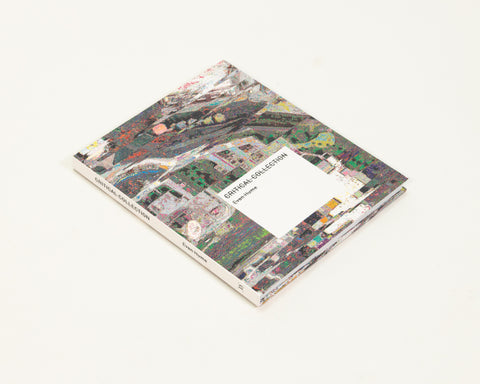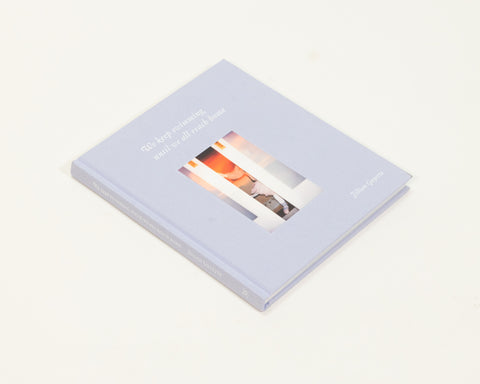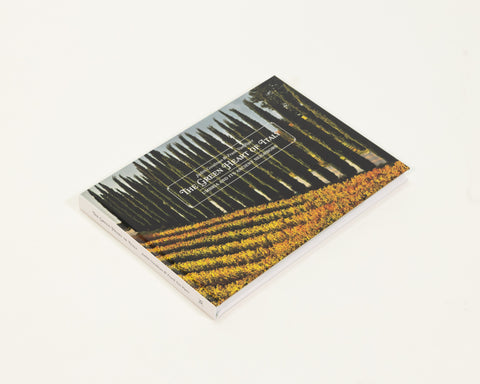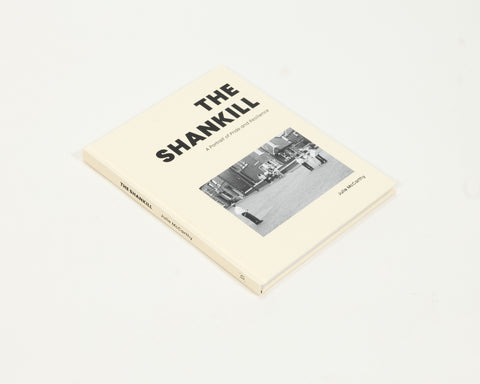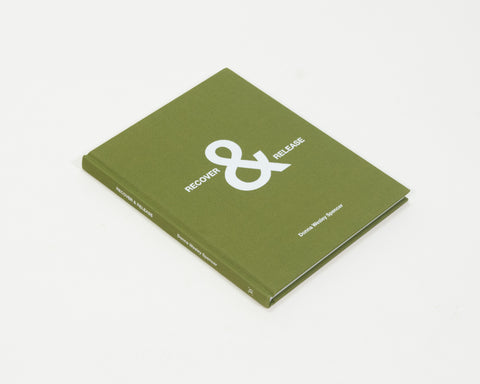On 12 May 2009, the front page of The New York Times featured an image of three soldiers seen from behind, perched behind sandbags on a rocky lookout over a lush green valley in eastern Afghanistan. All three soldiers wear helmets and flack jackets and are gripping their rifles, looking down on an invisible attacker below. The soldier on the left, however, 19-year-old Specialist Zachary Boyd, is wearing flip-flops, a bright red T-shirt under his camouflage vest and pink boxer shorts patterned with the ‘I ? NY’ logo.
The Associated Press (AP) photographer David Guttenfelder shot the photograph when the US Army troop he was embedded with came under attack and Specialist Boyd leapt out of his bunk, not yet fully dressed, to man his post. In this sense, Guttenfelder’s picture delivers classic reportage: a candid, immediate view of the heat of battle. But the photograph can also be interpreted as deeply reassuring. Media reports of the image focused on the patriotic message emblazoned on the soldier’s boxer shorts, while Defense Secretary Robert Gates publicly praised Boyd’s bravery, declaring: ‘I can only wonder about the impact on the Taliban.’ The photo instantly sparked a Google trend for ‘pink boxers’, and Guttenfelder was subsequently awarded second place in the ‘people in the news singles’ category in last year’s World Press Photo competition.
But the image is also a proxy for the front-page photographs we haven’t been able to see in the American press over the course of the conflict in Afghanistan and Iraq: those that depict American soldiers who have died in battle. While images like Guttenfelder’s are seen as affirmative, images of dead soldiers are criticized or censored. When the AP released a photograph of a mortally wounded marine in September 2009, Gates condemned the agency’s decision. Only in February of last year did he lift the 19-year-old ban on publishing images of US soldiers’ coffins returning from battle. The classic idea of war reportage (epitomized by Robert Capa’s 1936 photo, The Falling Soldier) has changed in this war.
Adam Broomberg and Oliver Chanarin, who have been photographing zones of conflict since 2000, have written extensively about the contemporary limitations of photojournalism due to the restrictions of being embedded and censorship by photo editors. After serving as judges of the World Press Photo competition in 2008, they wrote critically about the cliche?s and compromises prevalent in today’s war reportage, and the inherent contradictions of evaluating such photographs. They described their experience of sitting in a room for up to 20 hours a day scanning thousands of photos, using a buzzer designed for a game show to ‘keep’ or ‘kill’ each image after just a few seconds of viewing them without captions. The winning photograph that year, selected from 81,000 entries, was Tim Hetherington’s photograph of a US soldier in combat in Afghanistan, in which a young man is shown leaning against a rock, helmet in one hand and the other hand covering half of his face in a mixture of shock and exhaustion. For Broomberg and Chanarin, Hetherington’s picture ‘represents a nostalgia for the days of photojournalism at its sexiest, most lucrative and effective’.1 Their experience revealed the prevalence of what they considered a ‘particularly sanitized depiction of war’, while also exposing the problems of applying aesthetic criteria to such images. In response, while embedded in Helmand Province in 2008, they created the video and photographic series ‘The Day Nobody Died’, for which they enlisted the help of the British Army in shipping a 50-metre roll of photographic paper from London to Afghanistan. They then exposed strips of the paper to the sun for 20 seconds during events they normally would have photographed – from a visit to the troops by the Duke of York to the deadliest day of fighting – resulting in a series of monumental photograms showing abstract swathes of colour.
As an artist embedded with the British Army in 2003, Steve McQueen encountered some of the same restrictions that Broomberg and Chanarin reacted to. After just six days in Basra, during which he was rarely allowed to leave his bunk without an escort, McQueen abandoned the possibility of making a documentary film. ‘It was too hostile an environment,’ he said. ‘Obviously for the military you are just a token artist. You’re just in the way.’2 Instead, he created ‘Queen and Country’ (2006–ongoing), a series of postage stamps featuring portraits of British soldiers who have been killed in Iraq. McQueen’s project employs vernacular photographs chosen by the soldiers’ own families, but within his conceptual framework, these private portraits demonstrate the obstacles of visually representing war. (The Royal Mail still refuses to accept the series as commemorative stamps.)
The winning press photos by Hetherington and Guttenfelder on the one hand and McQueen’s art work on the other can be seen as two poles defining the spectrum of possible representations of war with a camera – one employs the rhetoric of reportage, the other uses a conceptual strategy, or the rhetoric of the metaphorical. Arguably, the photojournalist has a professional and ethical imperative to capture the immediate circumstances, while the artist has the license or luxury to turn his camera away from these events, even to question the photograph’s ability to accurately represent them. Does one approach function more effectively than another? And by what criteria can we judge their effectiveness? When it comes to images of the events and consequences of war, how close is too close? And how much distance is too much?
As Susan Sontag points out in Regarding the Pain of Others (2003), written in response to the events of 9/11, observing atrocity or making images of suffering is a privilege, if not a luxury. Both the photojournalist who tries to make a ‘realistic’ image of war and the artist who refuses to must ‘finesse the question of the subjectivity of the image-maker’.3 When it comes to picturing atrocity, any authorial impulse is inherently conflicted: ‘The photograph gives mixed signals. Stop this, it urges. But it also exclaims, What a spectacle!’4
Particularly since 9/11, the paradox of the spectacular image has sharpened the line between classic reportage and artistic approaches. The majority of the immediate images of that day’s events were taken by amateurs, while the photojournalists who arrived later focused on the aftermath – a form of reportage that writer and artist David Campany has termed ‘late photography’.5 This strategy consciously turns the camera away from immediate and obvious events, and concentrates instead on their traces. According to Campany, such post-spectacular imagery is characterized by its cool, forensic look at the evidence of violence, which comes to stand in for what we don’t see. Photographer Richard Mosse adopted this approach in his series of large- scale photographs, ‘Breach’ and ‘Nomads’ (both 2009), which he shot while embedded with the US army in Iraq. ‘Breach’ exposes the makeshift headquarters of US soldiers constructed in seven of Saddam Hussein’s former palaces. These colour photographs show the ironic contrast between the grandiose marble palaces and the flimsy, provisional American military accommodations erected inside. The monumental images in ‘Nomads’, taken with a large-format camera in the Iraqi desert, show cars so riddled with bullets that only their mangled shells are left. Both series are self-conscious about the limitations of reportage – the destroyed cars left abandoned on the field of battle don’t attempt to picture the war’s immediate drama, but they do evoke its human victims. Mosse sees his work as operating between the two poles of contemporary art and photojournalism: ‘The documentary photographer has a terribly difficult life compared with the conceptual artist. But, like Prometheus and Loki, we’re both tied to the same rock.’6 ‘Late photography’ incorporates the seriality of Conceptual art while consciously keeping imagery of disaster at bay. It constitutes what Campany calls ‘a second wave of representation’. How does our impression of the war change if we only see ‘traces’ rather than the ‘faces’?
Alongside aftermath photography, another group of images falls outside the usual spectrum of war reportage – those not made by photojournalists or artists: the views of Saddam’s hideout, snapped by the soldiers who first raided it; the unauthorized images of soldiers’ flag-draped coffins returning home, documented by a private contractor on a cargo plane; and the photographs taken by military personnel of prisoners at Abu Ghraib. This last group of images were taken by amateurs, staged for the camera, and not intended for public viewing. Once leaked to the media, their photographs were supplied as evidence of torture perpetrated by American military against detainees at Abu Ghraib, and resulted in prison sentences for many of those directly involved. In an essay titled ‘The Photographs Are Us’, published in The New York Times in 2004, Sontag argues that these pictures show how the act of photography itself at Abu Ghraib became immoral: ‘The horror of what is shown in the photographs cannot be separated from the horror that the photographs themselves were taken.’7
Though these snapshots do serve to condemn those who appear in them and took them, their shift of context from the private sphere to the media complicates their story. For all the gruesome details they expose, they conceal others. In Errol Morris’ 2008 documentary film, Standard Operating Procedure (and the book of the same title, written with journalist Philip Gourevitch) the documentarian set out to frame the infamous images in the context of the statements and motivations of the people behind (and in some cases in front of) the cameras at the prison. Examining all the primary source images, Morris goes behind the lens to try to fill the gaps in our knowledge. He focuses on Specialist Sabrina Harman – the young MP who, in 2003, took the notorious photograph of the hooded man standing on a box, and was herself photographed flashing a ‘thumbs up’ beside the corpse of a detainee. Interviews reveal that Harman started documenting her experiences in Iraq long before she focused on tortured Iraqi prisoners. Although she joined the Army Reserve, she originally wanted to be a forensic photographer and work for the police force, like her father and brother. While in Iraq, she took as many photographs of sunsets, local people and children as she did prisoners. Harman also took a series of 90 photos featuring the same mummified cat’s head, which she pictured in a variety of settings, including ‘on a bus seat with sunglasses, smoking a cigarette, wearing a tiny camouflage boonie hat’.8
In frequent letters to her girlfriend, Harman – who was eventually sentenced to six months in prison and discharged from the army – stated that she began photographing the detainees ‘to “record” what’s going on’. When she discovered the corpse of a prisoner who had supposedly died of a heart attack after being interrogated, Harman peeled his bandages off and photographed ‘everything I saw that was wrong’. Afterwards, still wearing her turquoise latex gloves, she posed for a snapshot giving the thumbs up next to the man’s dead body. Does the meaning of this picture shift when we learn that she appears in almost every photograph, no matter what the background, flashing the same cheerful smile and thumbs up gesture? Morris’ investigation acknowledges that these images don’t amount to photojournalism and should not be treated as such. How does our image of the photographs Harman took change when we become aware of their context and of her sense of authorship? Do we read Harman’s images differently when we learn of her ambivalent relationship toward the events in front of the lens, and her desire to create an ongoing, personal forensic record ?
The strategy employed in Standing Operating Procedure – that of giving form to the massive archives of amateur images that were not intended to have a form – is also employed by Sean Snyder in ‘Untitled (Archive Iraq)’ (2003– 5), a compilation of 98 photographs circulated by soldiers and veterans on the Internet. While Snyder extracts the most banal images for display, Thomas Hirschhorn’s Incommensurable Banner (2008), an 18-metre-long banner bearing images of war also found on the Internet, delivers the kind of gruesome and morbid imagery that Snyder withholds from us. Both the explicit and the banal appear in artist Monica Haller’s book, Riley and His Story. Me and My Outrage. You and Us (2009), produced in collaboration with her friend, Riley Sharbonno, a nurse at the Abu Ghraib prison who took more than 1,000 photographs on his tour of duty in 2004–5. Haller assembles a selection of them in a thick hardback tome, interspersed with Sharbonno’s own testimony about his reasons for taking photographs, which gives shape and meaning to the images. In the book’s first sequence of photos, taken on a trip to get medical supplies, Sharbonno’s camera is poised directly over the barrel of a gun mounted on the vehicle. As the landscape goes by, both lens and gun aim at the rubble of former houses, then at a shepherd passing with his flock. Many of the images have the sense of someone seeing something for the first time or photographing things as if to verify them for himself.
The first images of Abu Ghraib that appear in Sharbonno’s archive show the prison from outside – a perspective rarely seen in coverage of the scandal. Many of us will be surprised to see its resemblance to a sprawling parking garage, always engulfed in a yellowish dust cloud and lit by a hazy white sun. His texts reveal what the camera can’t show: ‘The prison is built on a mound of human remains.’ But the bulk of the book is composed of photos taken in the ER tent after mortar attacks on the prison. These snapshots reveal a palpable sense of chaos in this makeshift hospital, which is accentuated by the dust particles that blur the lens. At times, Sharbonno’s camera scans the room taking in the activity: the injured are treated by nurses and doctors wearing sweat- soaked army T-shirts and running shoes whose reflectors flash back at the lens. Sometimes his focus comes in close to capture forensic details: a piece of shrapnel covered in blood, freshly removed, or gaping holes in patients’ flesh. These have the ‘authenticity’ and ‘immediacy’ that photojournalism requires, but taking them was an automatic response for Sharbonno: ‘We were just like, “Holy shit, is this really happening?” So I just snapped pictures.’
These first-hand statements and views are no doubt arresting, but presenting them has its own limitations; it is hard to separate the original photographer’s authorship from the artist’s own. Haller’s text on the front cover frames her as a kind of therapeutic collaborator: ‘Right now, I am the artist. I want you to see what this war did to Riley.’ Also, the book’s heavy-handed graphic design repeats certain images and statements to heighten their effect. But the experience of flipping through the photos and reading Sharbonno’s statements eventually supersede the marks of authorship. One thing still screams behind all the pictures – namely, their relationship to the Abu Ghraib pictures we are all-too familiar with. Sometimes the similarities between Sharbonno’s pictures and those of Sabrina Harman are striking, not only in what they show but also in the way both soldiers impulsively used the camera to defer what was happening ‘now’, as if to create a distance between themselves and what they were witnessing, and to form a record, no matter how horrific, for an unknown audience in an undefined future. But the consequences the two groups of pictures suggest is clearly at odds – in these pictures, the soldiers are fighting to save the detainees.
In contrast to the sincerity and indignation of Haller’s work, Omer Fast’s complex four-channel video The Casting (2007) is more layered and ambiguous in its framing of representations of war. Fast’s work is based on an interview he conducted with a young US Army Sergeant on leave who describes an incident in Baghdad in which the sergeant’s squad shot a man in an oncoming Iraqi vehicle. Fast filters the story through a casting scenario in which an actor retells it, intertwined with an unrelated narrative, as if auditioning for a role. The events are reconstructed as highly artificial tableaux vivants, based on images the artist found on the Internet. The scenes from the incident in Baghdad were filmed in the Mojave Desert in California, using stage make- up and cinematic effects, with Fast casting himself as ‘director’. His method is essentially the same as Haller’s but The Casting relies on reconstruction and artifice to elude any claims of trying to accurately represent the events as they may have occurred. But what are the consequences of transforming an eyewitness account of war into a highly stylized and even ‘performed’ work of art?
Though Fast’s work aims to interrogate conventions of war reportage as well as films about war, it buries any possibility of a truthful account of the events under layers of representation. Fast’s simulacral constructions, as familiar as they are within contemporary artistic practice, throw every primary source about what took place into question, suggesting that there can be no faithful record. From the artist’s position as both real and fictional ‘director’ of these events, it is too easy to be cynical about the veracity or sincerity of images of conflict or violence that took place far beyond the artist’s view. Granted, we are bombarded with images of war, with varying degrees of intention and authorship, but some of them are bound to be more telling or more significant than others. Artists have the license to frame this kind of reportage – or to manipulate, mediate and interpret it – but they still rely heavily on amateur images, vernacular photos and photojournalism as the basic vocabulary of this language. Someone had to be there first.
According to Sontag, ‘real wars are not metaphors’ and if this is the case, perhaps they shouldn’t be treated as such. When artists apply an all-too constructed or allegorical framework to the first-hand accounts of suffering or violence in war, they also risk undermining the possibility of any truth at all. At some point we have to turn our attention towards what the photographs depict. ‘Let the atrocious images haunt us,’ wrote Sontag.9 By the nature of the atrocities they show, they will always be conflicted images – but it would be worse not to see them at all.
1. Adam Broomberg and Oliver Chanarin, ‘Unconcerned but Not Indifferent’, foto8.com, 5 March 2008
2. Steve McQueen quoted in Adrian Searle, ‘Last Post’, Guardian, 12 March 2007
3. Susan Sontag, Regarding the Pain of Others, Picador, New York, 2003, p. 26
4. Ibid., p. 77
5. David Campany, ‘The Red House’, Aperture, Issue 185, November 2006
6. Richard Mosse quoted in Hans Michaud, ‘In Conversation with Richard Mosse’, Whitehot Magazine, December 2009
7. Reprinted as Susan Sontag, ‘Regarding the Torture of Others’ in At the Same Time, Hamish Hamilton, London, 2007, p. 132
8. Philip Gourevitch and Errol Morris, ‘Exposure’, The New Yorker, 24 March 2008
9. Sontag, Regarding the Pain of Others, p. 115
Christy Lange is associate editor of frieze, based in Berlin, Germany.
Photograph by: AP photographer David Guttenfelder for the New York Times
